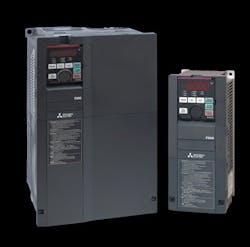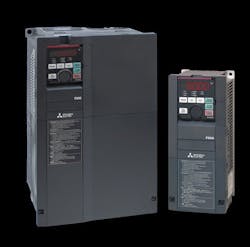A Powerful Three-Phase Solution—VFDs and the Future of Productivity
In remote locations and across many industries, ensuring a reliable and efficient power supply for three-phase equipment can be challenging, especially when only single-phase power is available. Remote sites often lack frequent maintenance. In critical applications like remote pumping stations or communication towers, consistent operation can be considered essential.
These are just two scenarios of the hundreds of variable frequency drive (VFD) applications where three-phase power could have been the lifeblood of productivity. Too often the absence of having this extra power can be a crippling obstacle. The good news is that there is a way to bridge this power gap and transform readily available single-phase power into the robust three-phase current that is needed to drive essential equipment.
It starts with understanding where and how it is being used. It is also important to explore the benefits of using VFDs for three-phase power in remote locations, including installation challenges and solutions, cost vs. benefits, sustainability benefits and technical details.
VFDs’ Three-Phase Power Across Industries
VFDs have become indispensable tools for optimizing the operation of a vast array of industrial equipment requiring three-phase power. For instance, in the realm of climate control, where massive HVAC systems within industrial complexes reside, VFDs ensure that the blowers and fans regulating airflow consume only the energy required, dramatically reducing operational costs.
Within manufacturing plants where air compressors, essential for powering pneumatic tools and machinery reside, VFDs operate with newfound efficiency, maintaining consistent pressure while minimizing energy waste.
READ MORE: VFD Cables Stand Up to Pulse Width Modulation Hazards and Harsh Conditions
VFD use can typically be seen within the material handling sector. Conveyor systems, which are vital for moving goods across vast distances, today can operate with variable speeds, streamlining production and reducing product damage. Even the smooth, controlled ascent and descent of modern elevators and escalators rely on VFD technology with three-phase power, enhancing passenger experience and energy efficiency.
These wide-ranging examples underscore the broad applicability of VFDs in powering and controlling essential three-phase equipment, optimizing performance and driving efficiency across diverse remote sites, which often lack frequent maintenance. VFDs enhance motor longevity by reducing stress from starting surges, thus minimizing downtime. In critical applications such as remote pumping stations or communication towers, consistent operation is essential.
However, the VFD often falls under the radar regarding how it is transforming the landscape of remote power solutions. While traditional rotary phase converters have long served as the go-to option, their inherent drawbacks—noise, maintenance and energy inefficiencies—leave much to be desired. VFDs, on the other hand, are emerging as a more sophisticated and efficient alternative, offering not just power conversion, but a suite of advanced control features that unlock unprecedented levels of performance and sustainability.
Taming the Elements
This is not to say that deploying VFDs in remote environments isn’t without challenges. These rugged landscapes often present a gauntlet of environmental extremes, from scorching heat and freezing temperatures to abrasive dust and corrosive atmospheres. Ensuring the longevity and reliability of a VFD system requires a strategic approach, a partnership with experts who understand the unique demands of remote deployments.
For instance, dust, humidity and extreme temperatures can wreak havoc on sensitive electronic components. Power instability is yet another concern, as fluctuations in voltage and frequency can trigger malfunctions and system shutdowns, leading to costly downtimes. Maintaining optimal operating temperatures for VFDs in diverse climates demands robust cooling and heating solutions. These challenges can be overcome with strategic know-how.
For instance, weather-resistant panels and enclosures can be essential for shielding VFDs from the elements and prevent condensation. Voltage stabilizers and surge protectors can safeguard against power fluctuations and ensure a stable and consistent power supply. In addition, advanced cooling and heating systems, including fans and climate control units, can be key in maintaining optimal operating temperatures.
The power to fine-tune machinery with precision can be the level of control VFDs bring to the table. They don’t just convert single-phase to three-phase; they become the conductor for an operational orchestra of machines and equipment. They can dial in the exact speed, torque and position needed, optimizing performance for any task, from delicate adjustments to heavy-duty operations.
This mastery is further enhanced by their adaptability, accepting a wide spectrum of input voltages (from 100V to 690V) and delivering frequencies from 0 to a blistering 1500Hz, ensuring compatibility with diverse equipment needs. Offering a final layer of security, VFDs stand guard with integrated protection mechanisms, shielding systems from the dangers of undervoltage, overvoltage, phase loss, drive overload and short circuits, guaranteeing safe and reliable operation.
Cost Savings and Sustainable Impact
Beyond their technical prowess, VFDs deliver significant economic and environmental benefits. By precisely matching motor speed to load requirements, VFDs dramatically reduce energy consumption, translating into substantial cost savings. Their solid-state design minimizes wear and tear, reducing maintenance costs and extending equipment lifespan.
The economic advantages of VFDs are clear. Reduced energy consumption directly results in lower operating costs. The minimized wear-and-tear due to fewer moving parts translate to reduced maintenance expenses and the controlled power delivery extends equipment lifespan by reducing stress on motors and machinery.
READ MORE: Variable Frequency Drives
Beyond the economic benefits, VFDs also offer a significant sustainability dividend. Lower energy consumption leads to a reduced carbon footprint, the extended equipment lifespan conserves resources by minimizing the need for replacements and the enhanced efficiency contributes to overall operational sustainability.
VFDs transcend the role of mere power converters, functioning as intelligent control systems that grant users unparalleled precision. Also, having such precision helps in manifesting dynamic control and optimizing performance across a spectrum of applications. VFDs offer versatile inputs and outputs, ensuring compatibility with a broad array of voltage and frequency demands. Robust protection is seamlessly integrated, safeguarding against potential hazards.
A Future Powered by VFDs
In the vast expanses of remote locations, where access to reliable power is paramount, VFDs are emerging as the cornerstone of sustainable and efficient operations. Their ability to seamlessly convert single-phase power to three-phase, coupled with their advanced control features and economic benefits, makes them an indispensable tool for businesses and industries operating in an array of challenging environments.
By embracing VFD technology, one can expect to unlock the full potential of remote operations, driving progress and sustainability in the most isolated corners of the world.
This article was submitted by Benjamin Strong, industry marketing manager (drive systems) at Mitsubishi Electric Automation.

